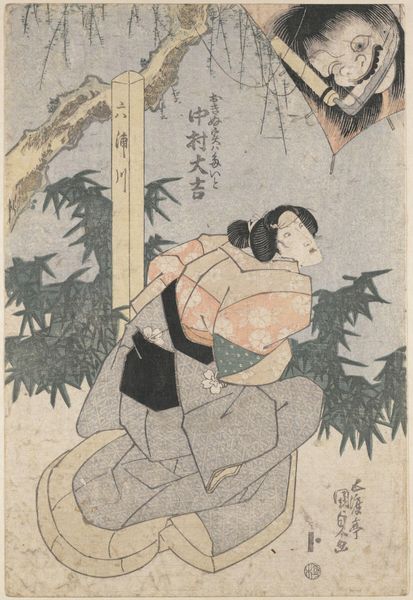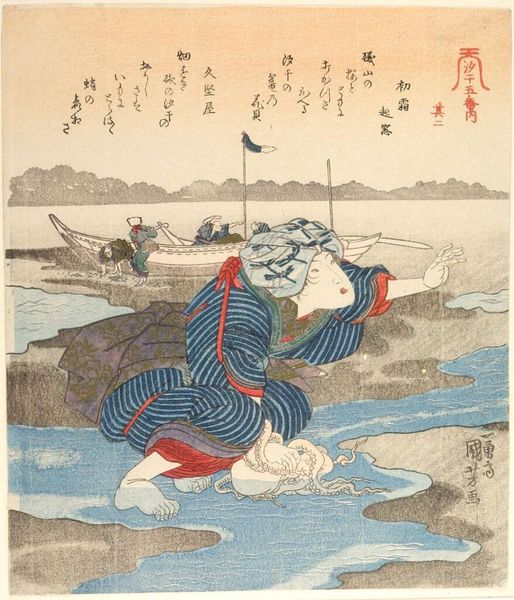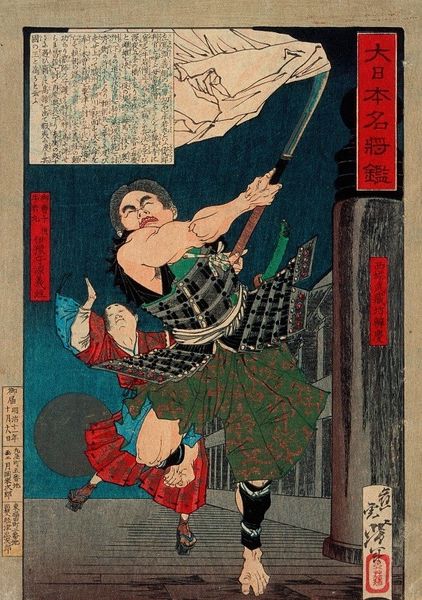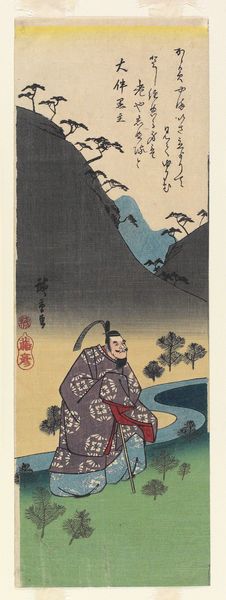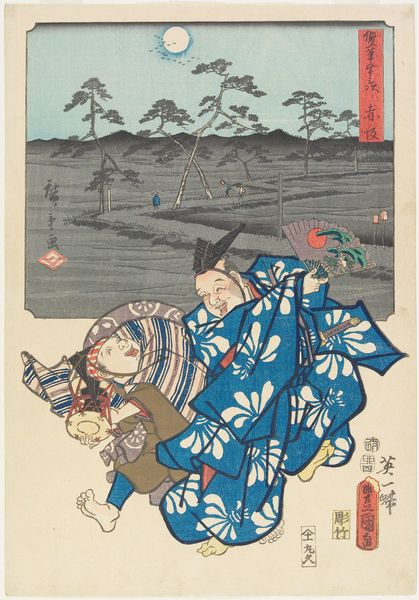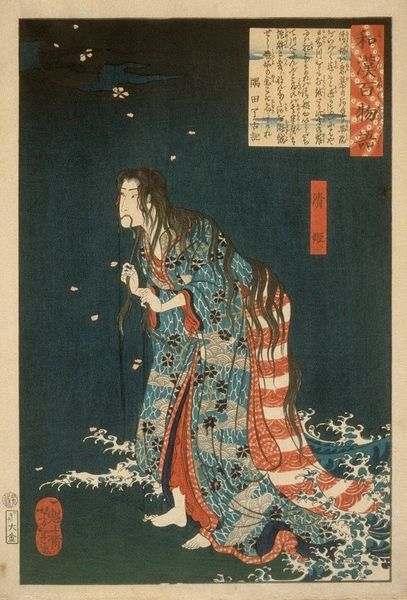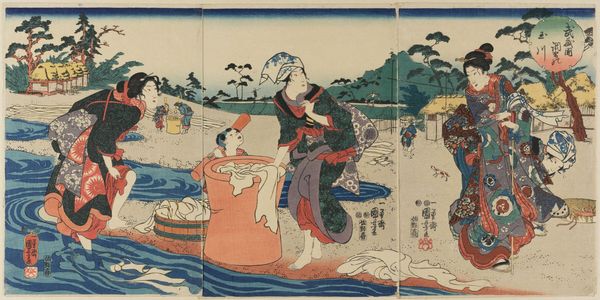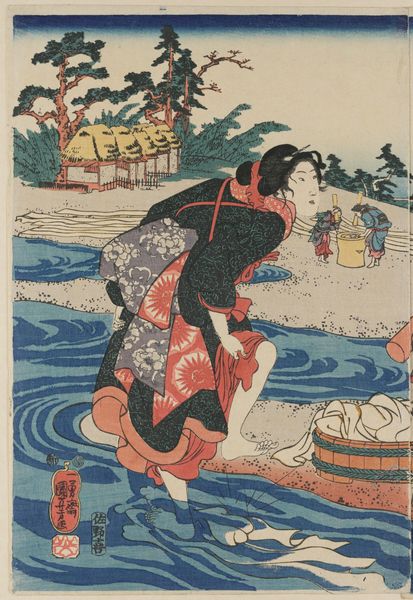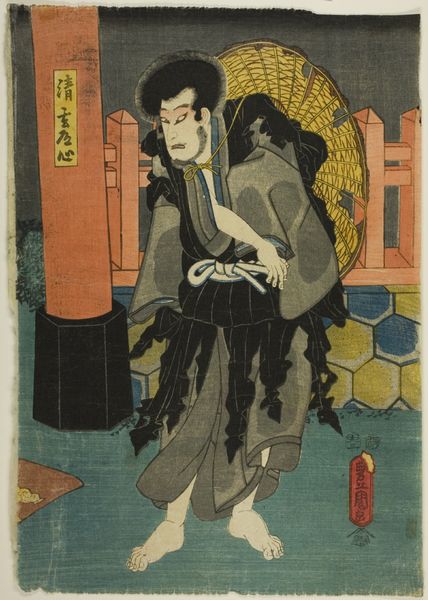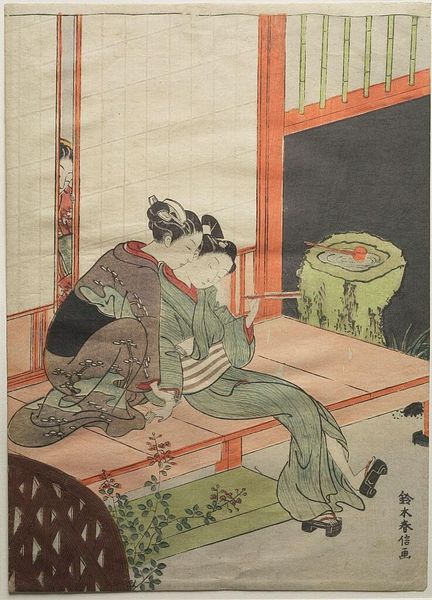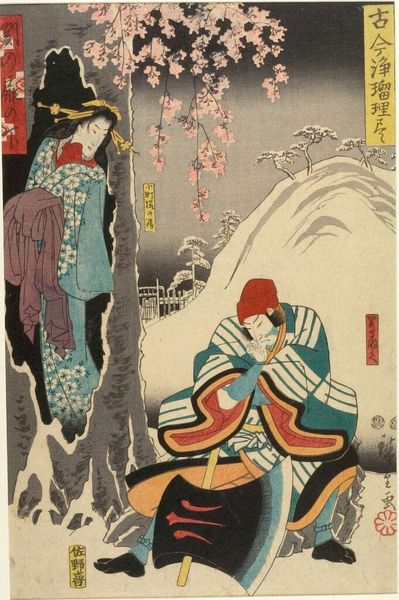
print, woodblock-print
#
narrative-art
# print
#
asian-art
#
ukiyo-e
#
figuration
#
woodblock-print
Copyright: Public Domain: Artvee
Curator: Welcome. We're looking at "Shirafuji Genta Watching Kappa Wrestle," a woodblock print created around 1865 by Tsukioka Yoshitoshi, a significant figure in the ukiyo-e tradition. Editor: This scene is startling, isn't it? There's a tense energy with the wrestlers, all bulging muscles, the lurid pallor of the creatures offset by this oddly nonchalant spectator fanning himself with red fan. It seems steeped in the grotesque but is oddly compelling. Curator: Absolutely. Yoshitoshi, positioned during the cusp of vast social and political changes in Japan, often portrayed ghostly and supernatural subjects. These kinds of scenes are connected to "Kwaidan" or Japanese ghost stories and folklore, popularized through art and theater. Yoshitoshi reinvigorated traditional ukiyo-e during a period when Western art was becoming fashionable. Editor: In viewing this piece with a modern, perhaps Westernized, lens, I consider how myth and storytelling reinforce dominant cultural narratives, too often at the expense of marginalized bodies. There's a voyeuristic quality here, even, Genta's seeming disinterest perhaps belying his power as a (presumably) human spectator observing this spectacle. And are the Kappa positioned as abject beings, othered through the artist's rendering? Curator: I see your point about cultural power dynamics. The kappa were often depicted as mischievous or even dangerous, but here there's almost a sense of them being performing for human amusement. What also catches my attention is Yoshitoshi's compositional choice of placing the man elevated above, his sandals placed deliberately to demonstrate his presence. It’s meant to portray human agency or even superiority within this world filled with supernatural elements. Editor: What's striking is the unsettling fusion of violence and entertainment. Even in his seeming passivity, there's a narrative about who gets to look, who performs, and who is subjected to violence, even symbolic, in the frame of the image itself. Curator: That makes me consider Yoshitoshi's potential social commentary through ukiyo-e at this stage in history, grappling with shifts in class, industrial changes, and Western influence, portraying supernatural themes as symbolic devices that subtly critiques socio-political conditions of the time. Editor: Yoshitoshi clearly offers more to analyze than a simple spectacle of folklore, creating dialogues around identity and power for continued discourse. Curator: Indeed, considering social history, symbolism, and artistic innovation allows this print to extend its conversation through our current moment.
Comments
No comments
Be the first to comment and join the conversation on the ultimate creative platform.
